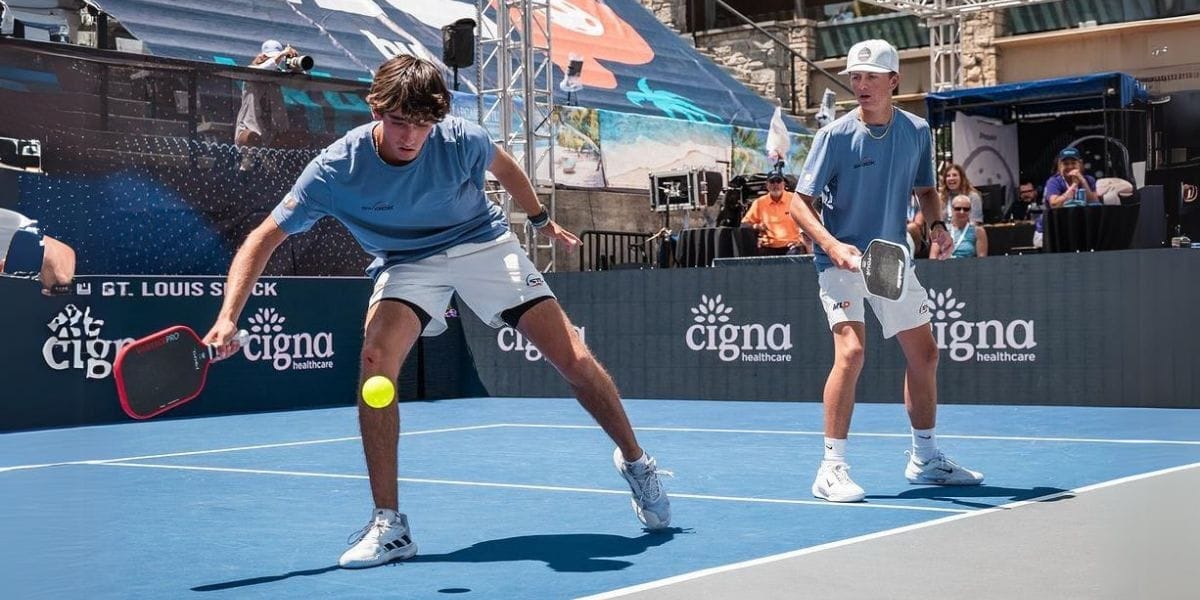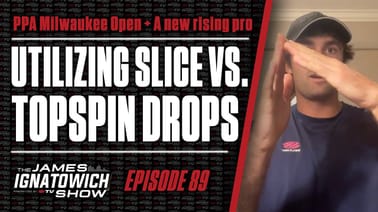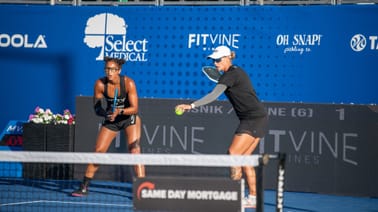
There’s no doubt that the right-side player's role in doubles has changed significantly.
Gone are the days when the right-side player could sit back and play a passive, defensive role. In today’s competitive game, especially at the highest levels, the right-side player must take an aggressive approach, creating offense and initiating attacks to keep their team in contention.
James Ignatowich discusses this transformation in a recent podcast episode, highlighting how right-side players have become more offensive in their play: “The right-side players are sometimes more aggressive than the left-side players now, and that’s a huge change from just a year or two ago.”
A New Offensive Strategy for Right-Side Players
Traditionally, the left-side player was seen as the primary aggressor in doubles, with the forehand in the middle of the court and often covering more of the action. But Ignatowich points out that right-side players are now taking on a more assertive role, particularly in terms of speeding up the ball and creating opportunities.
“The right-side players are actually speeding it up to a bigger area of the court than left-side players are,” Ignatowich explains. This shift opens up new opportunities for the right-side player to attack, especially when targeting the left-side opponent's weaker side.
Exploiting Weaknesses: The Backhand Counter
One key advantage for the right-side player is the ability to exploit the left-side opponent’s backhand. Ignatowich explains: “If the left-side player doesn’t have a strong two-handed backhand counter, you can pretty liberally speed it up down the line.”
There are two major reasons why this tactic works so well:
- The One-Handed Backhand Counter: Most players struggle with countering speed-ups with a one-handed backhand. It’s difficult to generate enough power to effectively end the point, making the left-side player vulnerable to attacks aimed at this spot.
- Court Coverage: The left-side player is typically covering 60-70% of the court, meaning they are already stretched thin. Forcing them to cover both the line and the middle opens up more space, especially if they need to step wide to cover a weak backhand. “If you can go right up the line to their high backhand, it’s tough for them to hit a hard counter,” Ignatowich adds.

How the Triangle Rule Creates More Offense
Ignatowich also emphasizes the strategic use of the triangle rule when speeding up the ball. Because of this rule, a well-placed speed-up from the right side often results in the ball being returned to the middle of the court. This gives the attacking team’s left-side player a golden opportunity to finish the point with a forehand putaway.
He notes: “If your partner is adequately prepared, they should have an easy forehand putaway to end the point.”
This strategy has become especially prominent at the top levels of men’s doubles, where the speed-up game has evolved into a key offensive weapon for right-side players like Matt Wright, Dylan Frazier, and Steve Deakin.

The Changing Dynamics of Right-Side Play
It’s clear that the role of the right-side player is no longer passive. Today’s top players are evolving, using their position on the court to create more offense and pressure the left-side opponent. “There are a lot of options to speed up and be aggressive as a right-side player,” Ignatowich says, stressing that this change has massively impacted how the doubles game is played at the professional level.
The modern right-side player can no longer defer to their partner in the middle and play it safe. Instead, they must embrace a more aggressive approach, utilizing speed-ups and targeted attacks to disrupt the opposing team and create opportunities for easy finishes.

Give It a Try on the Court
The next time you find yourself playing on the right side, don’t settle for a defensive role. Take a page from the pros and attack the left-side player’s weaknesses—especially their backhand. And remember, your goal is to set up your partner for an easy putaway. Bonus points if you can sneak the ball past them down the line for the winner.
By embracing this more aggressive role, right-side players can become a powerful offensive force on the court, helping their team compete at the highest level.
|











